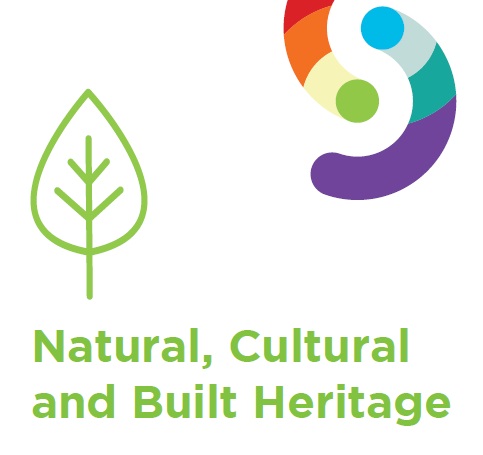Chapter 3

Vision
Protect and enhance the key natural, cultural and built heritage assets which have shaped South Dublin County and continue to create a sense of place and local distinctiveness, including our diverse landscapes, our varied flora and fauna, our historic buildings and streetscapes, and our rich archaeological history, for current and future generations to appreciate and enjoy.
Introduction
The term ‘heritage’ refers to everything that we have inherited from previous generations. This inheritance can be both tangible and intangible, and it is reflected in both our natural and in our built environments.
Our tangible heritage includes our natural landscape with its rich diversity of habitats and species. It includes our built environment which is composed of every-day homes, streetscapes, agricultural and industrial buildings, and highly distinctive examples of ornate architecture. It also includes our rich archaeological history, reflected in both the visible above ground monuments and the below ground records.
Heritage can also be intangible, or less obvious. This reflects our unique traditional customs, music, crafts, skills, oral history, local beliefs, myths and folklore. These are the human elements of our heritage which have built up over generations and which give us a sense of shared identity.
These tangible and intangible aspects of our heritage are not separate entities. They are very closely inter-linked, and they work together to create our distinctive cultural heritage. As we interact with our natural, built, and historical heritage, we are shaping our view of the world. We create an identity, and we build a sense of place for ourselves and for future generations.
Our cultural heritage assets are not static, however. Cultural heritage is a growing, ever-changing concept from generation to generation. Not everything can, or should be, preserved and what we retain, create, and build now will be our legacy for future generations, shaping their cultural identity.
The changes that are likely as a result of biodiversity loss and climate change will also bring challenges to our heritage assets, potentially altering our landscapes and affecting the integrity of our built and our historic features.
The challenge therefore is to manage the varied, inter-linking elements of our important cultural heritage resource in a truly sustainable manner, so that we can protect our heritage assets while promoting a quality of life and a sense of identity and pride in a vibrant, thriving County.